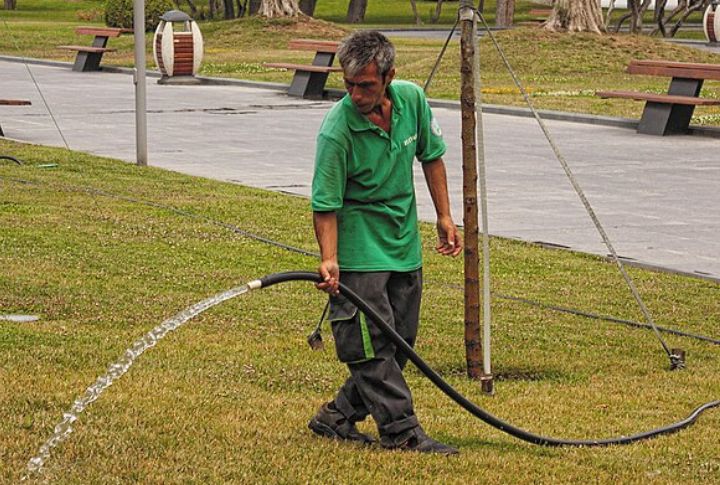
It’s dry, and the grass has just started turning brown. There is no rain, only scorching sunshine—so do you still mow your lawn or leave it to fight for itself?
Experts at Michigan State University (MSU) advise restraint: avoid frequent mowing during drought, as research shows it stresses turf further. Here are the answers to why that’s the case.
Dormancy Is A Natural Defense
When lawns turn brown in a dry spell, it’s easy to assume they’re gone for good. This is often dormancy—a survival mechanism cool-season grasses use to protect themselves.
The grass stops growing, conserving energy and water until conditions improve. Pushing it with unnecessary mowing or watering only adds stress. Accepting dormancy allows your lawn to survive until cooler weather and rain return.
A Little Water Goes A Long Way
Even in extreme heat, lawns don’t always need heavy watering. Applying just ½ inch of water every two to three weeks is enough to keep the crowns alive, even if the grass itself looks brown.
This small but effective step ensures your lawn isn’t permanently damaged. Once consistent rainfall returns, the grass can revive naturally. Shallow watering, however, encourages weak roots and wastes water, so consistency in this lighter schedule is key.
Raise Your Mower Blades For Resilience
The height of your mower blade makes a big difference in drought survival. Pros recommend mowing grass at 3 to 3.5 inches, which helps shade the soil, reduce evaporation, and strengthen roots.
Shortcuts expose the soil, further making it hotter and drier. Taller grass, by contrast, creates natural protection that allows lawns to stay resilient in tough heat. Pair that with sharp blades to prevent tearing.
Mulch Those Clippings For Free Fertilizer
Bagging clippings during summer heat wastes valuable nutrients. MSU notes that leaving them behind can recycle nearly one-third of your lawn’s annual nitrogen needs.
In dry spells, this natural “mulch” is especially helpful to help keep nutrients cycling and improving soil health without added fertilizer. It’s a simple adjustment: let clippings fall, and your lawn benefits. Over time, this routine supports healthier growth and better resilience in dry conditions.
Avoid Heavy Fertilizer During Heat Waves
Fertilizer and drought don’t mix.
In hot weather, grass growth slows naturally, making it less able to absorb nutrients. Feeding the lawn in this state only adds stress. MSU researchers caution that applying fertilizer to dry soil or stressed turf often results in wasted product—or worse, chemical burn.
The trick is to hold off until consistent rainfall returns because fertilizer works best when turf is actively growing and supported by moisture.
Delay Seeding Until After Recovery
It’s tempting to reseed a thin, patchy lawn right after a dry summer, but patience often pays off. Instead, wait until fall to apply a light fertilizer and allow time for the turf to recover.
Many lawns green back up naturally once cooler weather arrives. Jumping into reseeding too quickly wastes effort and seed. Give your grass recovery time before deciding if new growth is truly necessary.
Closing Thought
Caring for a lawn in scorching weather isn’t about forcing it to stay perfect—it’s about giving it the best shot at survival. By mowing higher, watering smart, skipping fertilizer, reusing clippings, and respecting dormancy, you support natural resilience.
These steps may seem small, but together they make a significant difference between a stressed yard and one that bounces back strong.

